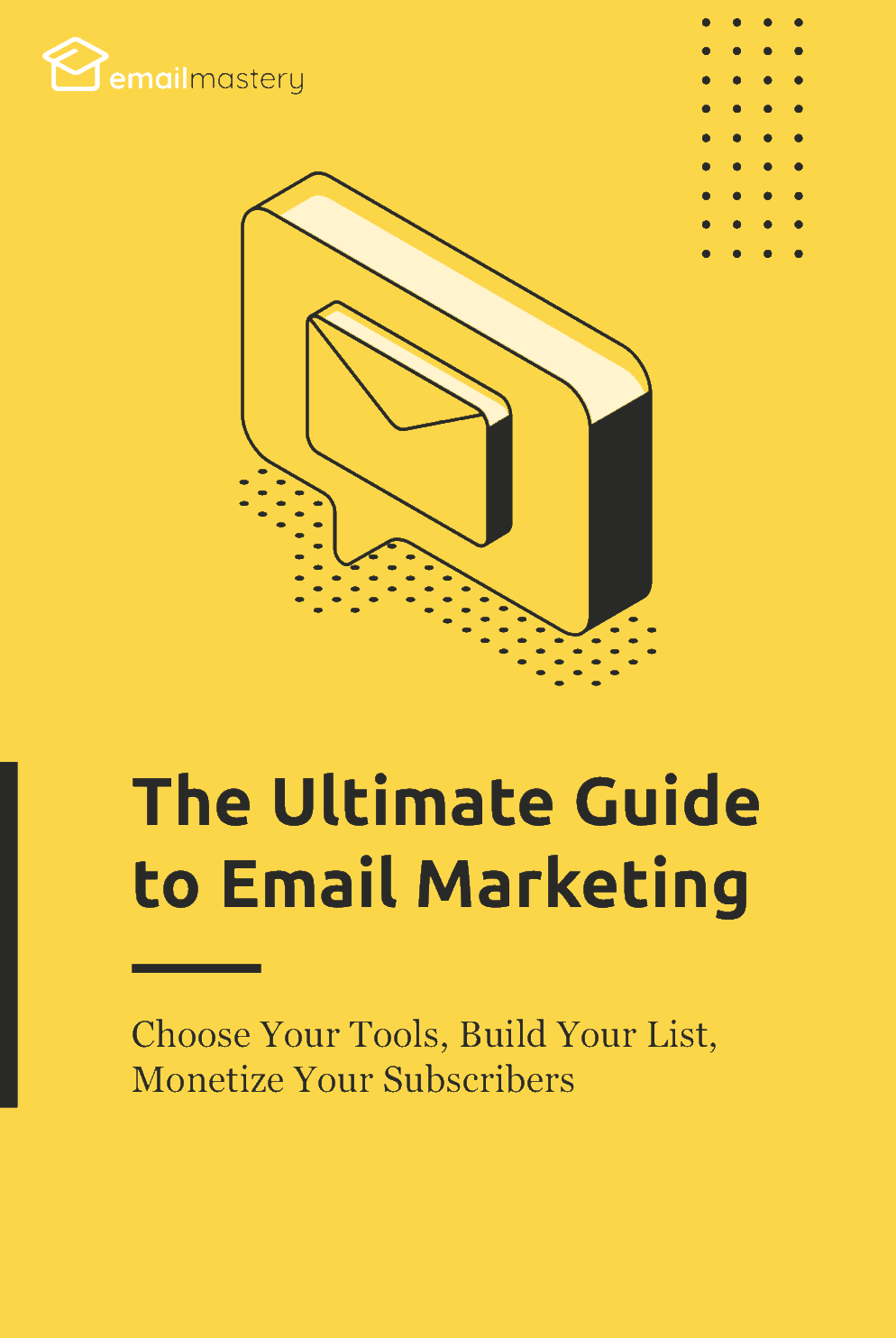
Chapter 4 – How to Grow your Email List (The Right Way)
Successful email marketing depends upon, well… having a list.
If you don’t have a list of people who’ve willingly given you their email address, then you don’t have anyone to send content to, you don’t have anyone to build a relationship with, and you (most importantly) don’t have anyone to sell your products to.
It might sound obvious, but I’m going to say it anyways.
If you don’t have an email list, then you can’t do much email marketing (none at all, that is).
Which is why in this chapter, we’re going to show you how to grow your email list the right way.
There are a lot of different ways to grow your email list. Some of them are effective, some of them are ineffective, and some of them seem to be effective but work against your long-term goals.
Here’s what I mean.
How to grow your email list the wrong way…
What if you could grow your email list to 10,000 people in the next 15 minutes?
Boom – 10,000 leads to interact with as much as you want. Build a relationship, send them your content, sell them your products.
Sounds pretty great, right?
Who, after all, wouldn’t want to have 10,000 email subscribers in their back pocket after 15 minutes of “hard work.”
Truth is, it wouldn’t take you any work at all.
How would you do it?
You’d buy email subscribers. 10,000 of em’.
And then you’d ride into the sunset with a wagon full of gold, right?
Eh. Not so much.
Actually, buying your email subscribers is a terrible idea.
I know it’s tempting at first glance, (Pay a little money and get 10,000 subscribers!? I’m in!) but the reality is not nearly as promising.
Here’s a brief overview of three reasons why buying email subscribers will hurt you over the long run, even if you do get lucky and make a few sales upfront.
- You directly violate the GDPR laws of consent for any of those subscribers in the European Union – This is a recipe for losing your email list, hurting the reputability of your IP address, and/or getting banned by your email service provider.
- Lists that can be bought shouldn’t be bought – Look, it doesn’t matter how hard the online email list “vendor” tries to sell you and tell you that their list is “pre-qualified with certain interests”, the truth is that you don’t know where that email list came from (regardless of what the “vendor” tells you) and you have no idea if they’re actually interested in what you’re selling.
- Your ESP will probably ban you – A purchased email list almost always leads to low open rates, low deliverability rates, and high complaint rates. Remember, a purchased email list doesn’t know who you are and they didn’t choose to be on your list, which means a jarring user experience and a poor email marketing experience as well. If it gets bad enough, your email service provider will likely ban you altogether, out of concern for their other users on the shared IP address, but also because buying email lists is directly against most EPS’s terms of service.
The point is, don’t buy email subscribers.
No matter how appealing 10,000 email subscribers in 15 minutes for a reasonable credit card payment is, that money will be wasted when your purchased list unsubscribes faster than you can say, “Look what I have to offer!” and your ESP bans you from service.
Don’t risk it.
There’s a better way.
Building your email list the right way…
Not all lists are created equal.
You don’t just need an email list. You need an email list full of people who know and trust you, who believe in what you have to offer, with set expectations for content, and an audience who is willing to give your product or service a try and keep coming back for more.
That’s something that a purchased list can never provide.
But a list built by your own two hands? With your own hard work?
A list forged by providing real value for people who’re interested in your niché?
That kind of list?
That kind of list is priceless – capable of changing your business for the better and 10x-ing your revenue. That kind of email list is willing to buy your products when you pitch them – heck, they are practically watering at the mouth waiting for you to make an offer.
They consistently buy your stuff, they consistently read your content, and they patiently wait for your next email to hit their inbox so they can buy some more — the classic recurring revenue model.
Sound great?
It sure is. It’s phenomenal. And it’s completely possible for you and for anyone who has the right tactics and is willing to put in the work.
So, how do you actually grow that kind of list?
Well, there are lots of different ways. And we’re going to go through several great ways that you can grow your email list to get profitable subscribers and promulgate recurring revenue.
Let’s get started.
The low-hanging fruit…
Look — there are lots of detailed and wonderfully complex ways to grow your email list. But the truth is, getting started is far more important than doing everything right.
If you have the choice between doing something dead-simple and getting 60% of the results verses staring at an overwhelming list of complicated to-dos for the next month and doing nothing, take the first path. You can do something more intricate in the future if you want to.
But right now, what matters is action.
And the low-hanging fruit of growing your list is simple and shouldn’t take you anymore than 30 minutes.
What is it?
Put a signup form on your website.
Most ESPs will allow you to do this quickly and easily with an embed code that looks something like this.
Once that signup form is on your website, visitors will be able to enter their email address and when they do, your ESP will automatically add them to your email list.
Of course, you have lots of different kinds of signup forms to choose from. Here are three basic options you’ll come across and where they will show up on your website.
1. Above-the-fold signup form
2. Pop-up signup form
3. Single-field signup form
Additionally, you have behavior-based signup forms — forms that only pop up when visitors take a certain action (scroll half-way down the page, put their mouse over the URL bar of their web browser like they’re about to leave, or even stay on a page for a certain amount of time).
Feel free to utilize these behavioral signup forms if the ESP you chose allows you to do so. If it doesn’t, then don’t sweat it. The most important thing right now is to choose a signup form and put it on your website.
Then skip to the section of this chapter that talks about driving traffic to your website.
Or, if you want to generate more subscribers faster and have time to dedicate to a slightly more complex strategy, read on.
How to create a lead magnet that your target market can’t resist (optional)
A lead magnet is a free piece of content (whitepaper, e-book, data report, etc) that you offer to people in return for their email address – kind of like this e-book (gotcha! :-D).
Ideally, you want to create a downloadable resource that is highly relevant to the kind of products or services you offer. That way, your email subscribers are pre-qualified as interested in your niché. And the more compelling and valuable your lead magnet, the more people who won’t be able to resist giving you their email.
You can use BuzzSumo to determine what kind of content is crazy compelling in your niché to make sure that you create a lead magnet that resonates with your ideal market (try searching an actual website domain within your market – BuzzSumo’s topical search doesn’t work that well). Also, check out BuzzSumo’s amazingly extensive headline research to make sure you craft a must-download headline for your lead magnet.
Note: There’s a common misconception that your lead-magnet resource must be something new, something super long, or something very time-consuming to create. That’s not true at all. Your resource could be something as simple as a repurposed blog post, podcast episode, or webinar. The real trick is crafting a headline and subheadline that your target market can’t resist. Then, so long as the resource provides real value, it doesn’t need to be super long or even something new – just something genuinely helpful.
And you can use Leadpages or even your email service provider (Mailchimp or ConvertKit, for instance) to create a landing page that allows people to download the lead magnet and submit their email address to your list.
Here’s an example from HubSpot of what that might look like.
And when I click “Download Now,” here’s the form that pops up.
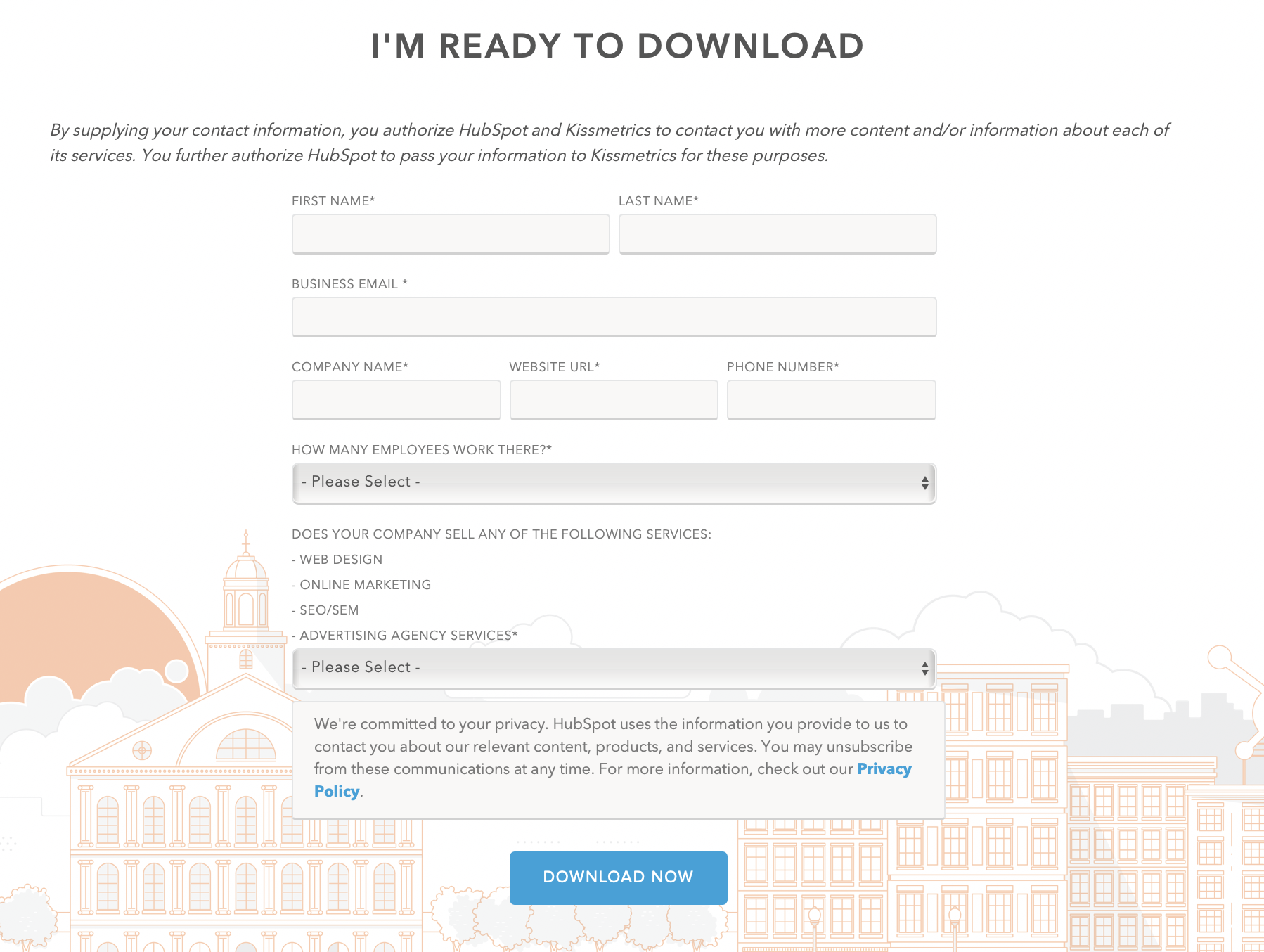
And, for inspiration, here’s one more example from AdEspresso.
Of course, having a compelling lead magnet for people to download isn’t enough. You also need people to download it.
But that’ll never happen if you don’t drive traffic to the lead magnet’s landing page.
5 ideas for driving free, high-quality traffic to your lead-magnet
Idea #1: Repost blog content on Medium
The blog content that you’ve already written and published represents a great opportunity to collect email subscribers.
Consider repurposing your blog content on Medium – the public blogging space – with CTAs to your lead magnet interspersed throughout the article.
For instance…
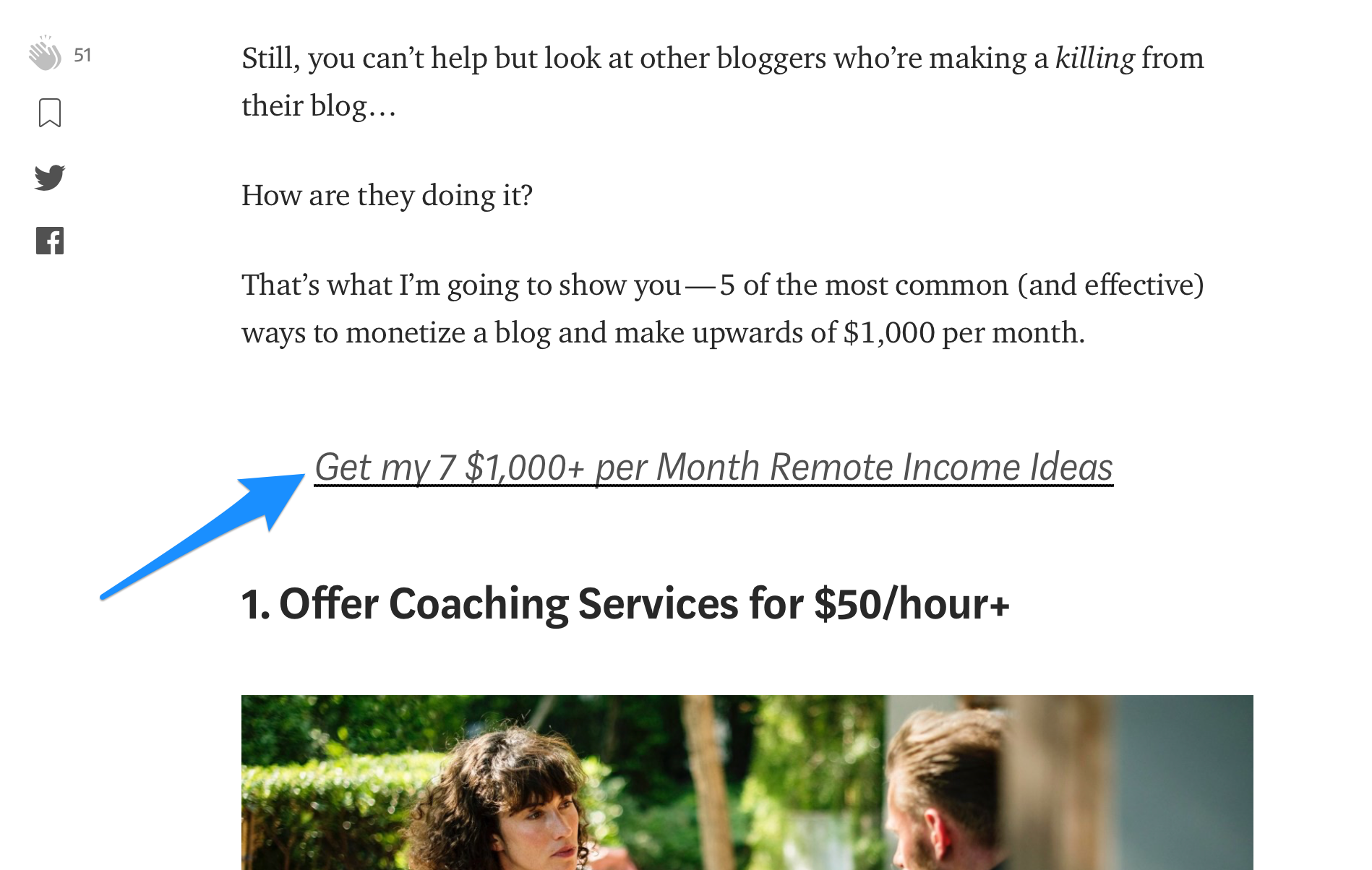 *Highlight text and click the “quote” option twice to get that type of formatting*
*Highlight text and click the “quote” option twice to get that type of formatting*
Since Medium reader’s receive digests of articles that are pertinent to them, reposting your blog content on Medium gives you the chance to reach a much larger audience than you might on your own.
You might even consider trying to write for a Medium publication to expand your reach further – just make sure they don’t mind your CTAs.
Idea #2: Add a P.S. signature to your daily email that pitches your lead magnet
If you’re like most of us, then you send a lot of personal emails every day. And every single email that you send is an opportunity to gain another email subscriber, without any extra work.
All you have to do is add a “P.S.” CTA to your email signature.
Like this, for example. 
Idea #3: Guest blog for relevant publications
By pitching and publishing articles for online publications that are within your niché, you don’t just position yourself as a market expert, you also give that publication’s readers an opportunity to sign up for your email list – if you do it right, that is.
Assuming that the readers enjoy your content, it’s likely that they’ll look for a way to follow your content other than through the publication where they found it.
Unfortunately, most publications won’t allow you to put your own CTAs throughout your article like you can on Medium.
What most publications do allow, though, is for you to put a CTA or link within your author bio to your lead magnet landing page or website homepage.
While it’s not the best-written thing in the world, here’s an example of how you can include your lead-magnet CTA within your author bio.
Just make sure that the publication is okay with you including a link and CTA to your website within your author bio. If they aren’t, then it’s probably in your best interest to find a publication that is before you spend time writing an article for them.
Of course, all of this raises another question: how do find editor’s email addresses and pitch articles that get accepted?
Well, to find editor’s email addresses for a specific website, you can use Clearbit.
Then, to determine what kind of content performs well on the publication’s site (helping you pitch an article that the editor’s are more likely to accept), type the publication’s domain into Buzzsumo and browse through the results.
When crafting your headline and outline (which you should pitch the editor before writing the entire article), try to mimic the style, tone, and topic of the publication’s most-shared content without plagiarizing.
Once you have a headline and outline, you can pitch your idea using the below email template.
Subject: Article idea…
Hey [name]!
My name is [name] and I’ve been trying to expand my writing portfolio and expertise in the [niché/market]. And I’d love to write for your site if you’re accepting guest contributions.
I noticed that your audience really likes content about [topic]. In line with that, here’s my idea:
Title: [title]
[outline]
Is this something you might be interested in? If so, I’ll get started putting together a draft for you to look over.
Either way, let me know!
Best,
[name]
Don’t be afraid to follow up if you don’t hear back for a week or so (editors are notoriously busy). Once the article gets accepted, put together a draft, work with the editor to get it published, and make sure you know whether you can include a link/CTA within your author bio or not.
If it doesn’t get accepted, pitch the same idea to another relevant publication. If it still doesn’t get accepted, then think up a new idea and pitch that instead.
Idea #4: Be a guest on relevant podcasts
Similar to guest blogging for relevant publications, you can also be a guest on relevant podcasts. Usually, guest-showing on podcasts is easier and faster than guest blogging (because you don’t have to put an entire article together).
You can search for podcasts within your niche on the Podcasts app if you have an Apple device or iTunes if you have Windows (the more relevant to your market, the better). Make a list of the ones you find.
iTunes…
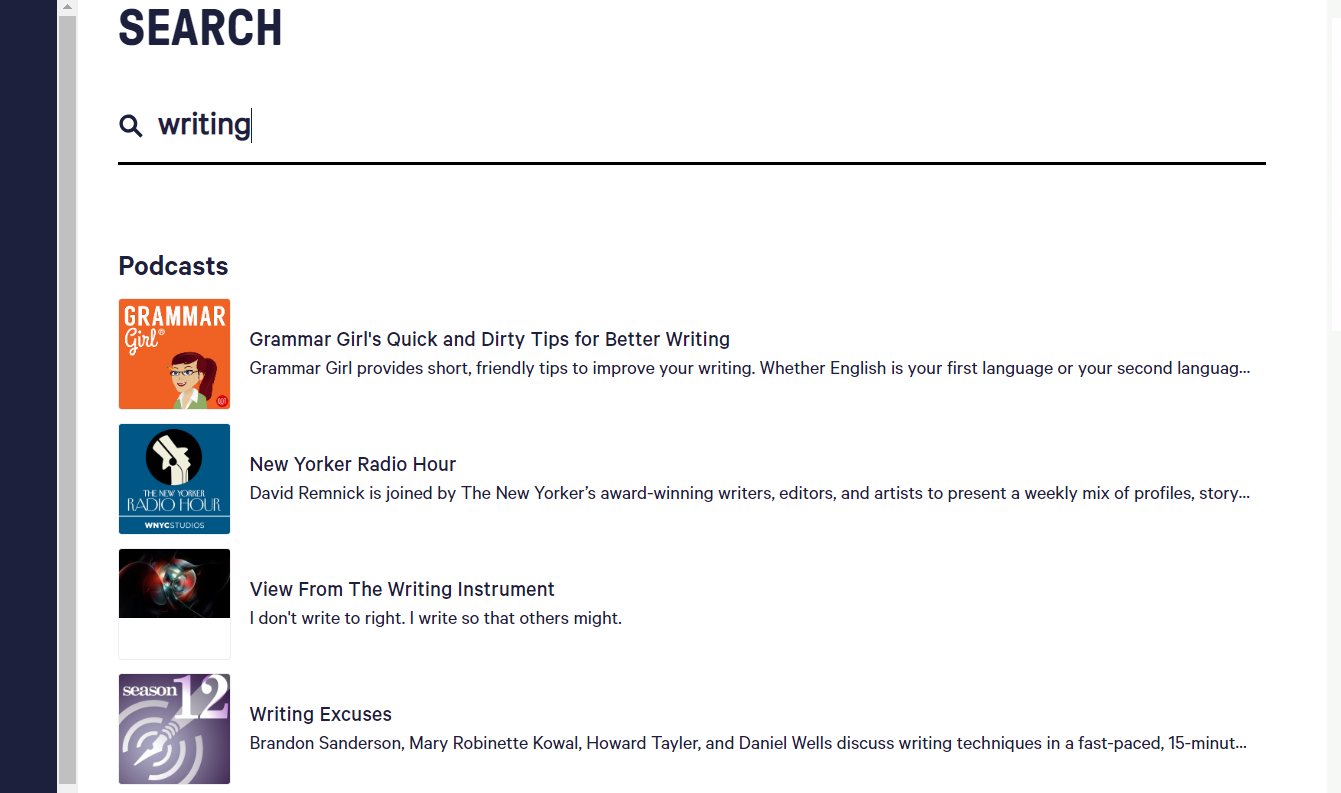
Podcasts…

Or you can just search in Google for relevant podcasts and browse through the results.
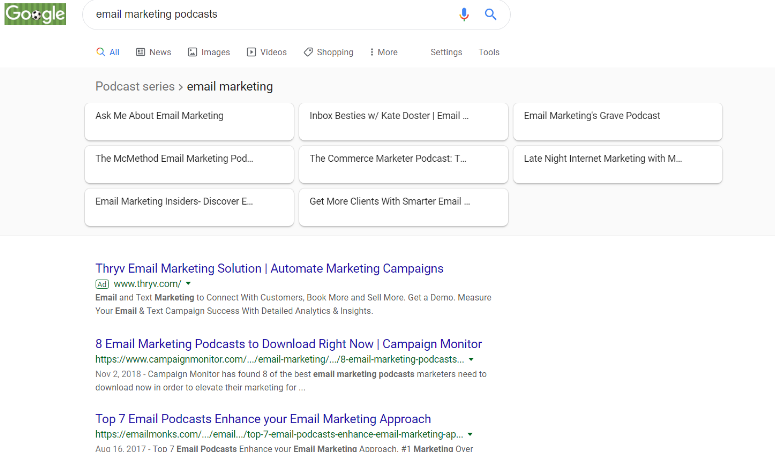
Then, one by one, search for those podcaster’s websites in Google, find their contact form (or use Clearbit) and send them something similar to this email.
Subject: Quick question… Hey [name]!
My name is [name] and I’m a [title] at [name of business], where I help [your audience] [solve specific problem].
I have lots of experience with [industry expertise], in particular, and I thought that you having me on to discuss what I know about [industry expertise] might greatly benefit your audience.
Is that topic something you might consider?
I’d love to come on to chat with you and your audience.
Either way, let me know!
Best,
[name]
Again, don’t be afraid to follow up multiple times if you don’t hear back. People are busy and often forget to respond to emails that they meant to respond to in the first place.
To automate the follow up process (and know if the outreach email was opened) you can use MixMax to setup sequences.
If the idea gets accepted and the podcast gets scheduled, simply ask via email if you can point people in the direction of your own website (i.e. lead magnet) near the end of the podcast — this is typical of podcast guests and good podcast hosts won’t have any problem with it.
Idea #5: Engage in relevant forum threads
The fifth sure-fire way to generate a consistent flow of email subscribers is by engaging in forum threads relevant to your market.
People online are constantly asking questions — questions that you know the answer to. And by engaging in those question-and-answer spaces, you’ll establish yourself as an expert (over time), draw the eyes of potential email subscribers, and — most importantly — build long-term relationships.
Consider using Quora to get started. Then you can research other forums relevant to your niche and engage on those as well. Just make sure you include a link to your lead magnet in each profile you create to make the most of when people view your accounts.
Finally, create a weekly or daily cadence to engage in each forum and slowly, one by one, you’ll draw attention to your profile, your lead magnet, and your email list.
One last idea that’ll cost you some money, but is crazy effective…
This one is going to cost you some money.
But it’s too darn effective not to mention.
What is it?
A giveaway.
You’ve probably signed up for some yourself. Someone promises to give a spectacular gift to one or a few people (via the draw of a hat or its digital equivalent) and all you have to do to enter the drawing is enter your email address.
It’s a no-brainer.
Who, for instance, wouldn’t enter their email address to win a trip to Tahiti, coffee for life, or a brand new computer?
“Enter my email for a shot to win THAT? I’m in.”
Point is, nothing makes your target market give you their email address quite like running a giveaway on an item that particularly appeals to your target market.
And that’s the kicker — what you giveaway must be of great interest to your target market and your target market only. That will ensure that the people who do sign up for your email list during the giveaway are actually the people you want to sign up for your email list — people who are interested in what you’re an expert at and might even buy your products down the road.
The best part about a giveaway is that it doesn’t have to cost you that much money. People will give you their email address for a relatively inexpensive gift.
JewelScent, for instance, hosted a giveaway before Valentine’s Day; their item of choice?
A candle with random jewelry inside.
And that inexpensive campaign gained JewelScent 3,431 email subscribers in just 8 days. Talk about a good trade-off.
The company also estimates that their 8-day campaign made them more than $18,000 with the increased exposure.
Which brings us to the other great part about giveaways: namely, that people talk about them. They tell their friends. They tell their family. They encourage people close to them to sign up.
Which is good for your email list and good for your business publicity.
To run your own giveaway, follow these simple steps.
- Choose a gift (doesn’t have to be too expensive) that your target market would get really excited about. Something that will make giving their email address to you a no brainer to have a shot at winning.
- Create a landing page and/or pop-up form where people can sign up for your giveaway. You can use Leadpages, Sumo, and/or your ESPs landing page builder or regular signup form builder.
- Build out your promotional plan. Don’t launch your giveaway without first knowing how you’re going to market it. Set a start date and end date for the giveaway and market the end date on your landing page to create urgency. Promote your giveaway on social media, in forums, on podcasts, and even when guest blogging — anywhere that you can get your hands on.
- Launch the giveaway and collect email addresses. At the end of it, hold true to your promise, choose someone to be the receiver of your much-desired gift, and announce the winner publicly.
It might cost you a bit of money, but it’s one of the fastest and most sure-fire ways to flood your email list with your ideal audience.
Note: If you own a brick-and-mortar store, then most of the above strategies still apply to your own list building efforts. Fortunate to have in-person interactions, you actually have more opportunity to build your list by trading customer membership programs, discounts, giveaway entries, and special offers for an email address right at the counter. Remember, every interaction is an opportunity to gain a subscriber, online and offline.
Growing your email list is a matter of taking action…
You now know the worst way to grow your email list (buying subscribers) and the best way (by driving your target market to a lead magnet).
You also have practical strategies for stuffing your list with your target market.
You have everything you need.
Now, it’s time to take action.
Your email list won’t grow by the thousands overnight. You won’t wake up feeling any different. But over time, it will grow. If you stick with it, if you use these tried-and-true strategies consistently, then your email list will grow at a healthy pace.
And the more you work at it, the faster it’ll grow.
Next, we’re going to talk about the mission-critical email marketing metrics that you can’t afford to ignore — the ones that can literally make or break your business.

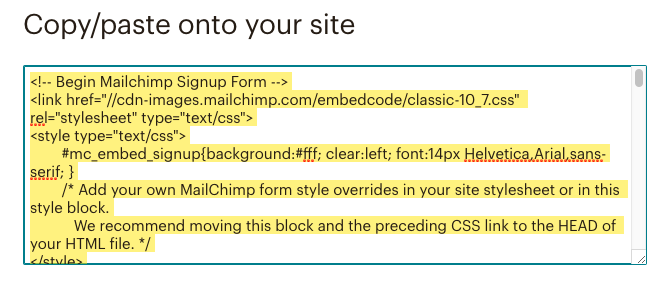
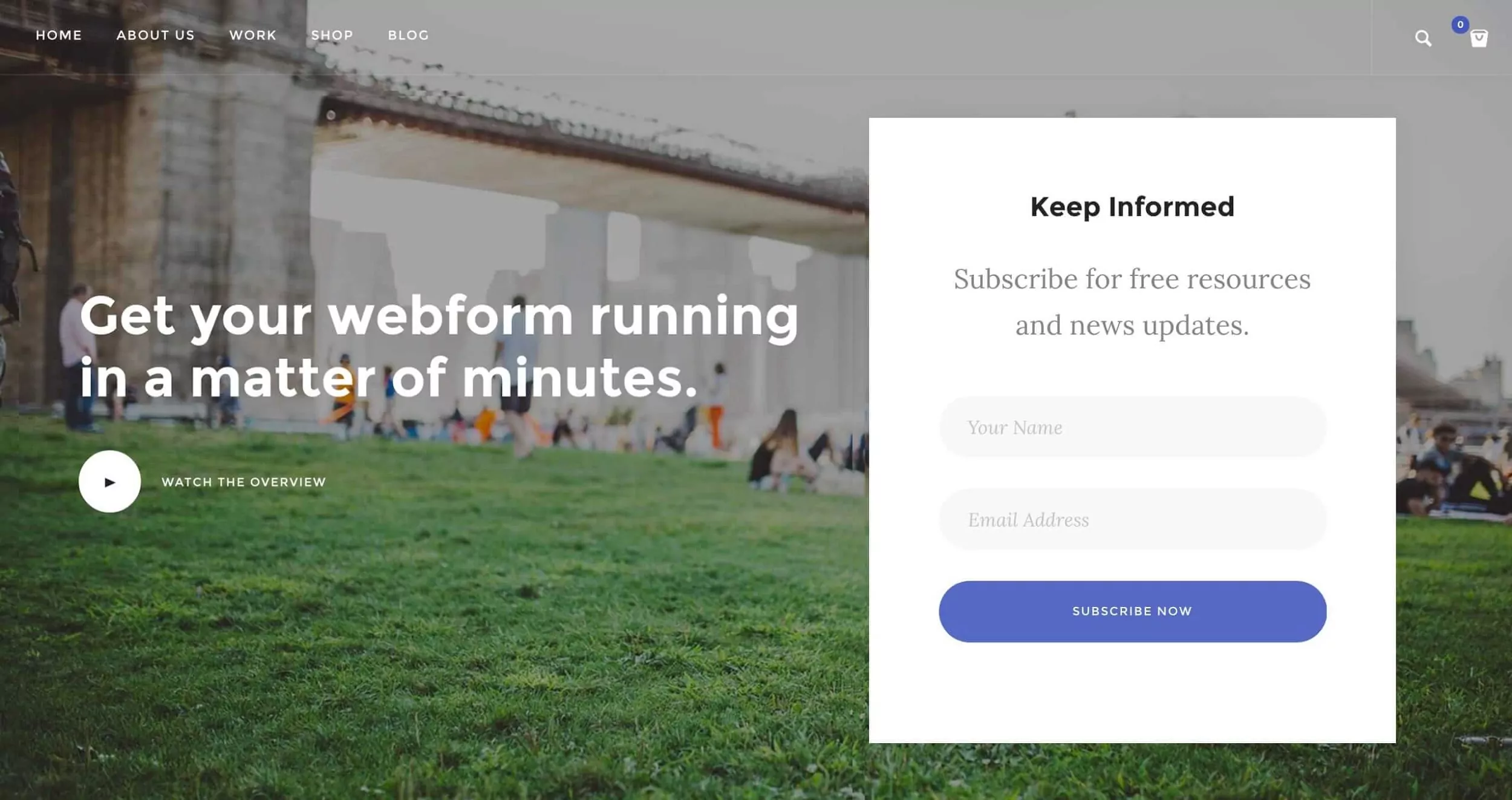

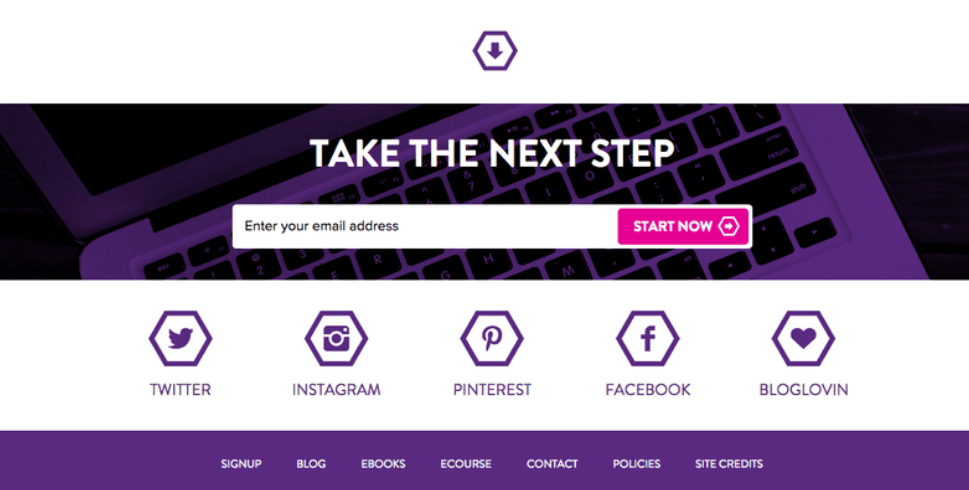
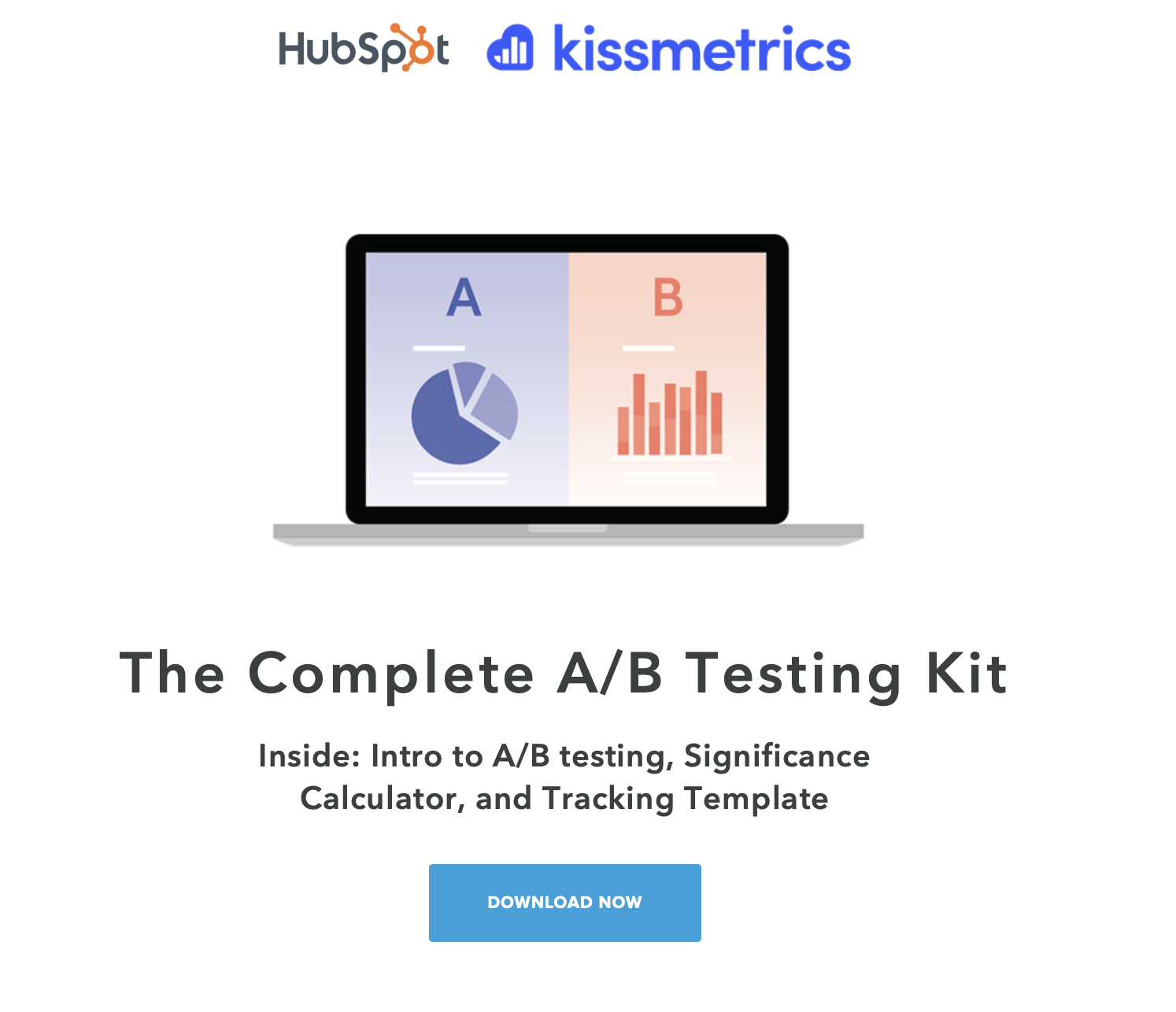
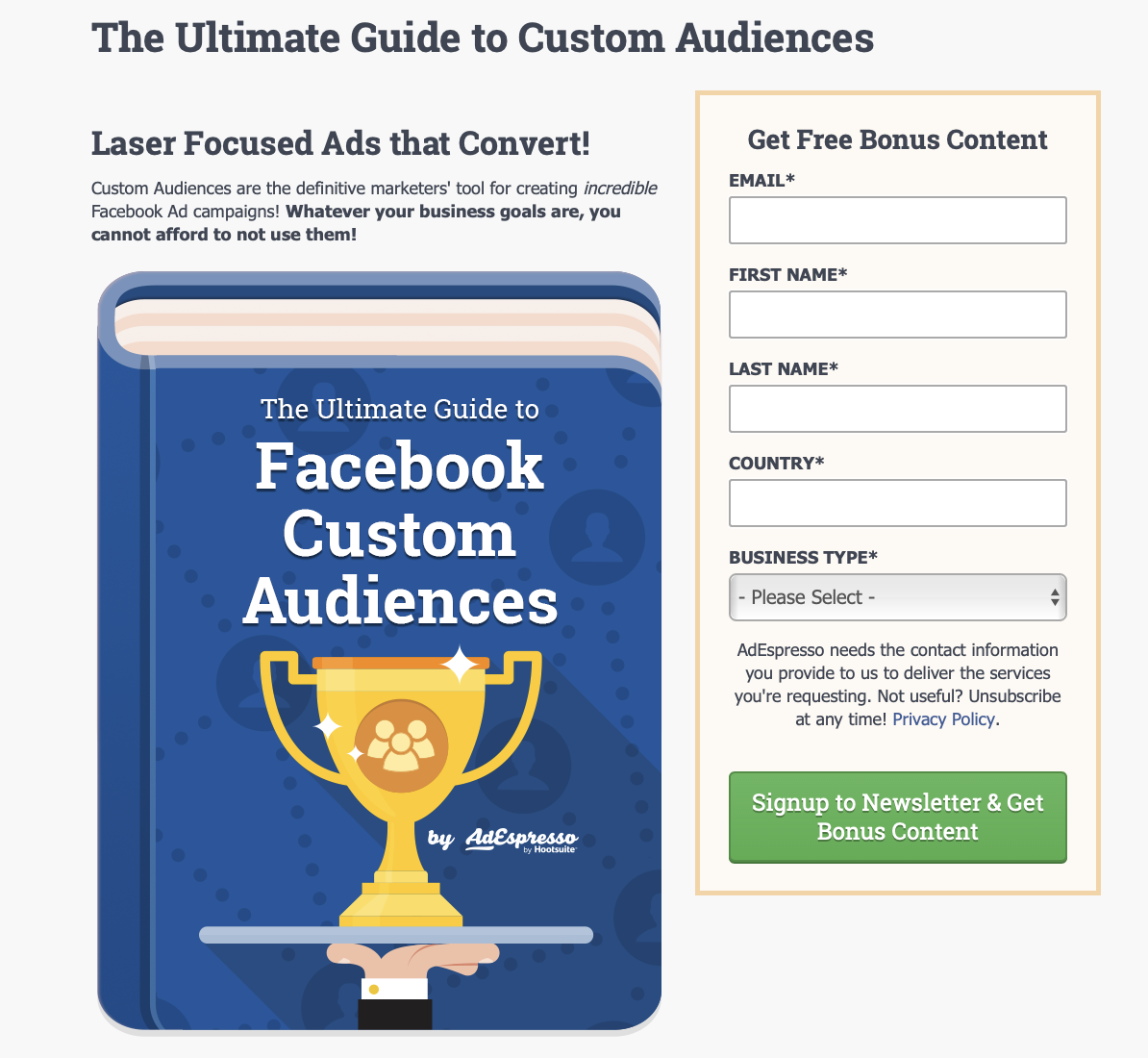
 (
(